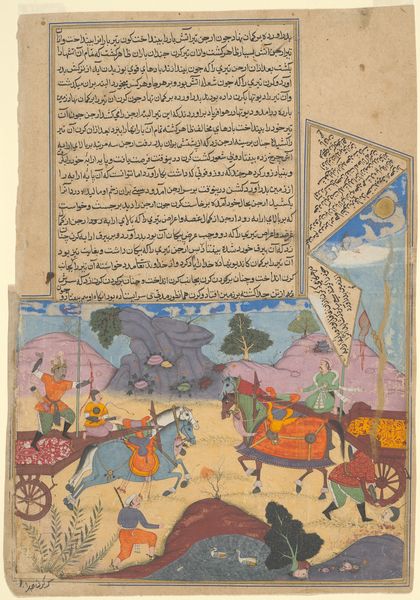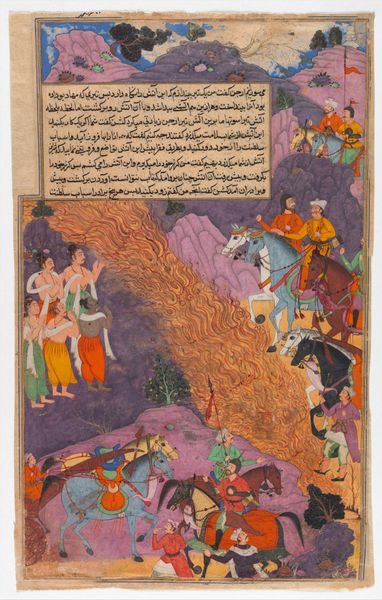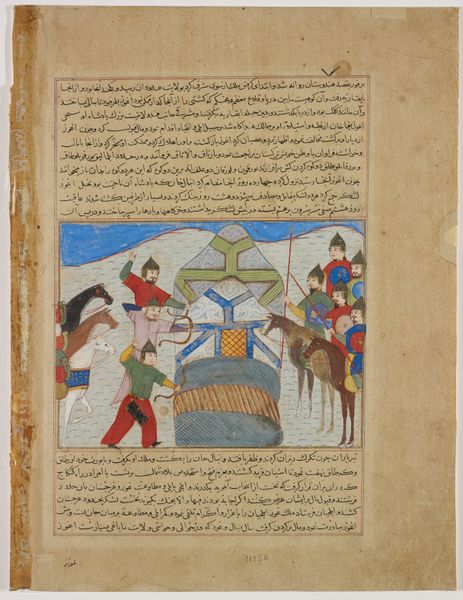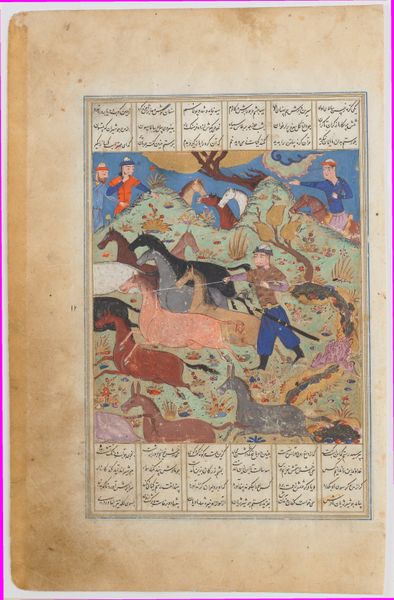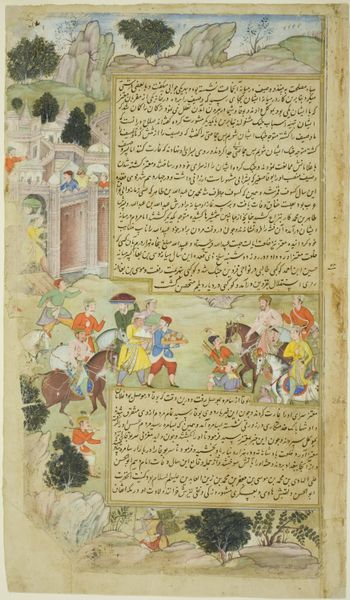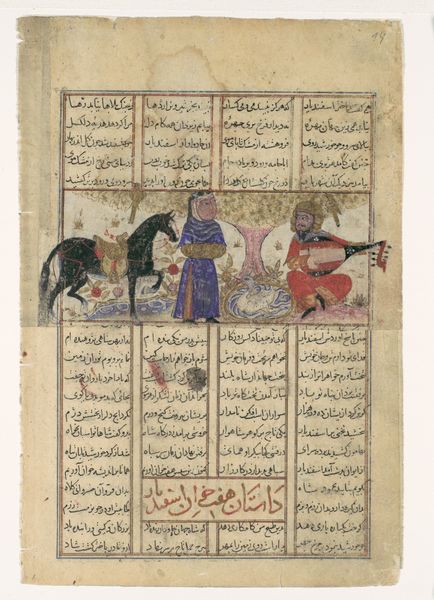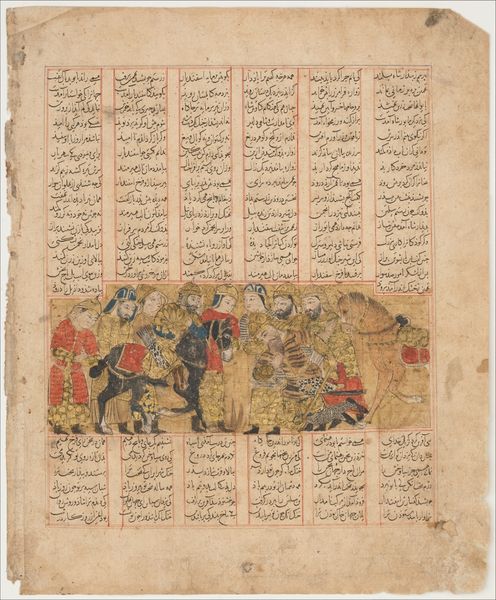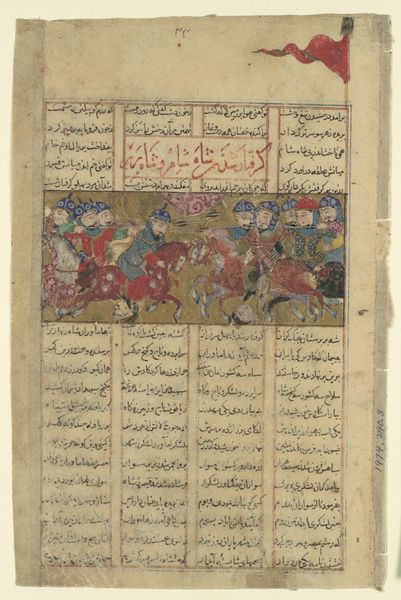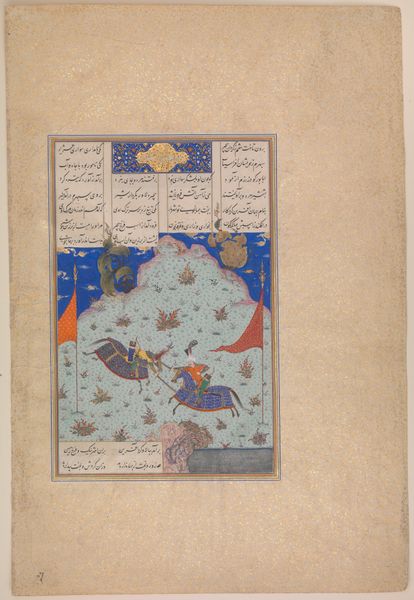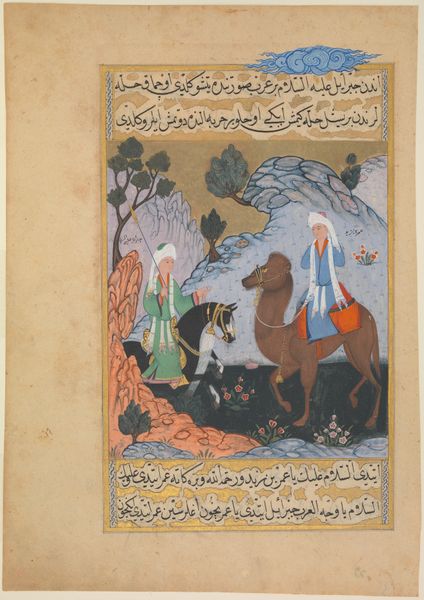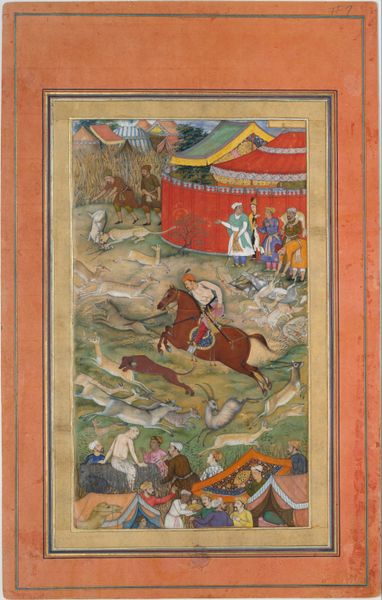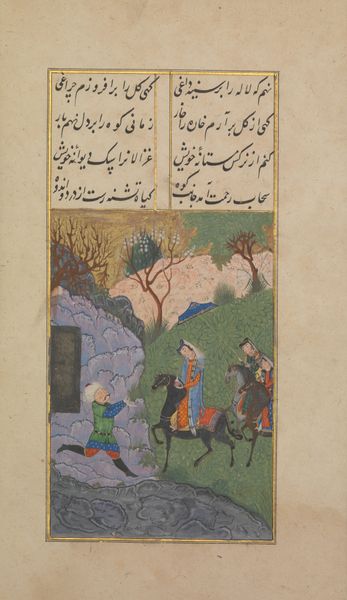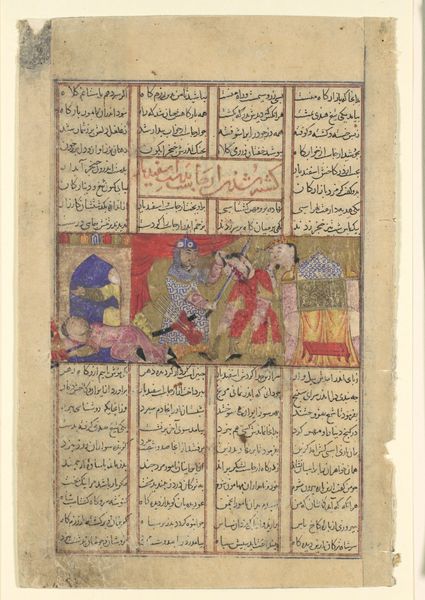
"Arjuna Battles Raja Tamradhvaja", Folio from a Razmnama 1591 - 1642
0:00
0:00
painting
#
painting
#
landscape
#
figuration
#
geometric
#
abstraction
#
islamic-art
#
history-painting
#
miniature
#
watercolor
Dimensions: Page: H. 15 1/2 in. (39.3 cm) W. 14 9/16 in. (37 cm) Painting: H. 9 1/2 in. (24.2 cm) W. 9 3/16 in. (23.3 cm)
Copyright: Public Domain
Curator: We're looking at "Arjuna Battles Raja Tamradhvaja," a folio from a Razmnama, which roughly dates from 1591 to 1642. This miniature painting is currently housed in the Metropolitan Museum of Art. Editor: My first thought is how vibrant and dynamic it is! Despite its small size, the painting teems with figures and bold colors. The layered composition really draws you in. Curator: Right. As a folio from the Razmnama, a Persian translation of the Hindu epic Mahabharata, this piece served to introduce Indian narratives and aesthetics to the Mughal court. Notice how the painting interweaves Persian miniature traditions with the Indian subject matter. Editor: I see the Persian influence in the intricate detail and the way the text is integrated. But looking closer, the narrative here is fascinating—it seems to depict Arjuna, a heroic figure, in the thick of a battle, facing off against Raja Tamradhvaja. I’m wondering what sociopolitical statements were made by showcasing such a specific moment. Curator: Absolutely, the very act of commissioning such translations during the Mughal period was itself a political statement, one aimed at cultural assimilation and portraying the emperor's interest in local traditions to strengthen ties with their Hindu subjects. It emphasizes a conscious effort to foster understanding, albeit from a position of power. Editor: It's always important to acknowledge that power dynamic and challenge any romanticized interpretations of cultural exchange. What seems like an inclusive act might actually be a complex assertion of dominance. Is the choice of portraying a battle perhaps a reflection of this dynamic, emphasizing strength and conquest? Curator: The martial theme may underscore a valued concept within both cultures: righteous war. But the specific episode may have been selected for its themes of morality, duty, and the consequences of conflict which were important values in both Hindu and Mughal society. It presented complex ethical quandaries. Editor: So it goes beyond mere storytelling and extends into a space where ideologies could be shaped. That also speaks to the artwork's role beyond simple aesthetics. It was definitely a powerful tool of soft power, and the visualization is very compelling. Curator: It certainly was. This work provides a fascinating glimpse into the intertwined histories and power structures that shaped the artistic landscape of the Mughal era. Editor: Looking at it through this lens definitely enhances my understanding and appreciation, challenging initial assumptions and prompting more questions. Thanks for walking through that.
Comments
No comments
Be the first to comment and join the conversation on the ultimate creative platform.
